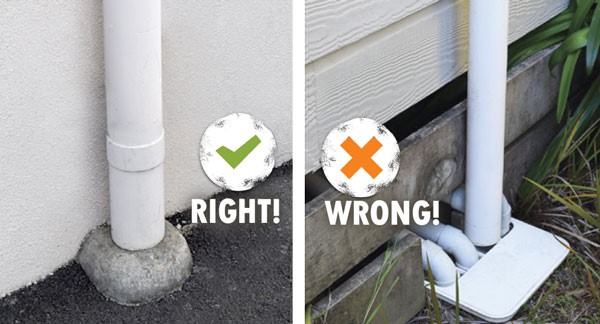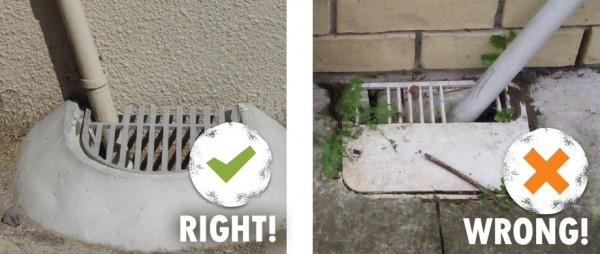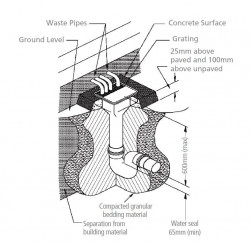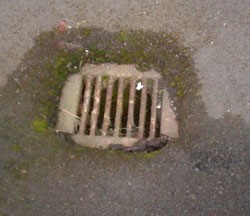Historically, many Tasman townships have experienced wastewater overflows when heavy rain hits our region. This has resulted in wastewater getting into our waterways, which has a detrimental effect on our ecosystems, is a human health risk and is frankly just not very pleasant for anyone.
This isn’t a new issue and it’s not just happening in Tasman, it happens all over the world, but it is something that Council has been working very hard to address.
We’ve put together a short video that explains the basics about inflow and how you can do your bit to help reduce it.
Inflow and Infiltration (I&I) refers to rainwater and groundwater that enters the wastewater system through a variety of defects on public and private property. The systems are not designed to carry all this water and it causes them to overflow.
Inflow sources allow rainwater to enter the wastewater system directly from the surface through incorrect plumbing, cross connections and damaged or low-lying gully traps or manholes.
Infiltration sources allow the groundwater to seep into the wastewater system through cracks or bad joints in wastewater pipes and manholes.
A certain amount of I&I is unavoidable and it is planned for in routine wastewater design. But too much I&I, especially during severe weather events, can overwhelm the wastewater system, leading to overflows and the associated risks to health and damage to the environment.
The increased frequency of extreme weather events and overall growth in our region is leading to the risk of more overflows. This means we need to start taking wider action.
Evidence from other towns and cities shows that this is a very long-term project. It will take many years to fully understand and address I&I in our region and finding solutions will be critical.
The Council has planned an ongoing inflow and infiltration programme in addition to the existing CCTV investigations, which uses cameras to examine our pipe network from within to check for problems.
This will enable us to collect more data and make better decisions on balancing maintenance and renewal spending. Over time the renewals programme will address inflow and infiltration as ageing and broken pipes will be replaced or rehabilitated.
We will identify illegal private and failed connections and take action to have these rectified. The cost of identifying the problem will be funded by the Council’s budget and the private party involved will fund the repairs.
As part of the solution, we are considering the use of low pressure pump systems for new subdivisions in flat areas where the groundwater table is high. This will likely reduce the impact of inflow and infiltration in the network.
We are planning to improve co-ordination with the Building Compliance Team to ensure new connections to the network do not contribute to the existing issues.
As a property owner, you play an important role in addressing this issue and helping to reduce the risk of overflows. If you find anything wrong that you can easily resolve, please take action now. You'll be part of the solution, not part of the problem.
Please go outside your property and check these three things; downpipes, gully traps and sumps.
Downpipes

Right. Installed above ground. Wrong Downpipe enters gully trap at ground level
Look at your roof, where do your downpipes go? They should connect to the stormwater system, not the sewer/wastewater system. If the downpipes from your roof connect into a gully trap, then you will need to re-direct it into the stormwater system.
What is a gully trap?
A gully trap is a plumbing feature that should only receive wastewater from your kitchen, bathroom and laundry. The gully trap connects to the sewer (wastewater) network which takes wastewater to the treatment plant for treatment. The top or surround of the gully trap should be above ground level and partially covered to stop stormwater/rainwater and other foreign matter (such as landscaping bark) entering the wastewater network.
What should my gully trap look like?

Right - gully trap installed above ground. Wrong - gully trap flush with ground.
A good gully trap has covers and a high surround that stops rainwater going into the wastewater system during periods of heavy rainfall. A faulty gully trap will let rainwater into the sewer/wastewater system.
 What does the building code say about gully traps?
What does the building code say about gully traps?
This diagram of a gully trap is from the New Zealand Building Code. The surrounds of the gully trap have to be 50mm above a paved surface or 100mm above an unpaved surface.
Sumps
 A sump is a stormwater feature that collects rainwater from external surfaces such as driveways and patios. The sump has to connect to the stormwater system, not the sewer/wastewater system.
A sump is a stormwater feature that collects rainwater from external surfaces such as driveways and patios. The sump has to connect to the stormwater system, not the sewer/wastewater system.
The only way to test for a cross connection without calling a plumber or drain layer is to check for a foul odour that is stronger than a normal organic /vegetation smell.
Last modified: